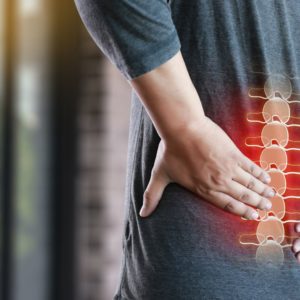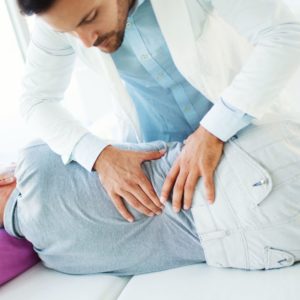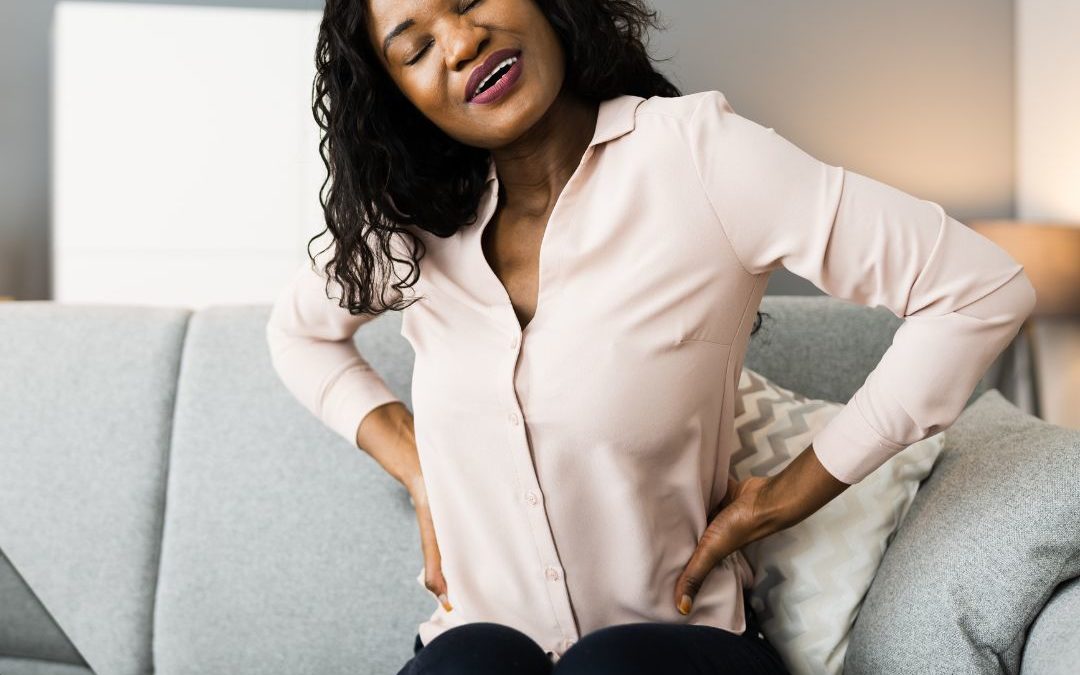“87% of young people have back pain. The other 13% have no computer.” – Unknown
Several regions of the human body’s back, or dorsal side, are commonly subject to pain. And these regional types of pain have a variety of causes that are often specific to those regions.
But the lower back, or lumbar region, is probably the area where most people suffer pain.
As Spine-Health points out,
“Most commonly, mechanical issues and soft-tissue injuries are the cause of low back pain. These injuries can include damage to the intervertebral discs, compression of nerve roots, and improper movement of the spinal joints.”
Unsurprisingly perhaps, lower back or lumbar muscle strains and sprains are the most typical causes of low back pain. Muscle strains and sprains are quite common in the lower back since this region supports the upper body’s weight and is regularly engaged for moving, twisting, and bending.
And lumbar strain or sprain can be both painful and debilitating.
Lower Back Pain – Easy to Trigger, Hard to Relieve
Many people use the terms strain and sprain somewhat interchangeably, but they mean different things.
For example, lumbar muscle strain is caused when muscle fibers are abnormally stretched. Simple actions such as repeated heavy lifting or sudden awkward movements can strain back muscles and spinal ligaments.
On the other hand, lumbar sprain is often caused when ligaments, those tough bands of tissue that hold bones together, are torn from their attachments.
Both of these lower back injuries can result from sudden movements or gradual overuse.
Pain of any kind is considered chronic if it lasts for more than three months and does not succumb to the body’s natural healing process. And chronic pain in the lower back is often caused by a disc problem, a joint problem, or an irritated or compressed nerve root.
Posture can also be the villain in the story of back pain.
A DePaul University environmental health and safety website article had this to say about posture,
“Your posture affects your back whether you’re standing, sitting, or reclining. Awkward postures increase strain on back muscles and can bend the spine into positions that can put pressure on discs and cause trouble.”
Prevention and self-care are often sufficient to avoid or at least mitigate lower back pain. But even these are not always enough.
Suffering from Lower Back Pain Means Never Being Alone
An article posted on a New York surgical hospital website notes that,
“Most people will experience some form of lower back pain in their lives. About 97% of back pain is caused by a mechanical issue and will get better quickly.”
However, as many people can attest, the actual percentage of lower back pain that does “get better quickly” may not be so high. And although many instances of lower back pain may subside within a few months and not reach the level of “chronic” pain, it can repeatedly return as a form of recurring lumbar pain.
And how common is lower back pain?
The Cleveland Clinic states,
“Back strains and sprains are the most common cause of back pain. You can injure muscles, tendons, or ligaments by lifting something too heavy or not lifting safely.”
There is Hope for Hurting Backs
Ice and heat, anti-inflammatory medications, pain relievers, and various stretching exercises may help alleviate some of your lower back pain. At least for a while. But none of them can actually treat the cause and bring permanent relief.
But that does not mean relief is not possible.
Treating lower back pain with therapies such as Active Release Techniques®, or ART®, can be the most effective approach for achieving permanent relief.
ART® soft tissue treatment is a long-established and highly regarded soft tissue therapy system that treats dysfunctions and pain issues stemming from nerves, muscles, tendons, and ligaments.
As we have discussed here already, chronic pain issues usually result from injury to or overuse of muscles, tendons, and ligaments. In addition to lower back pain, other examples are carpal tunnel syndrome, shin splints, golfer’s and tennis elbow, and many types of sports injuries.
Treatment with ART® follows an in-depth examination. After obtaining the patient’s relevant history of pain and related issues, the practitioner manually evaluates the texture, tightness, and movement of targeted soft tissues. These include the muscles, fascia, tendons, ligaments, and nerves in and around the patient’s pain area.
Any abnormal tissues detected are then treated with a combination of precisely directed tension with very specific movements by the patient.
Finding Real Relief from Lower Back Pain and Discomfort
Are you experiencing severe, recurring, or chronic lower back pain? Once you’ve determined that you no longer want to simply “live with it,” you can begin the journey to real relief.
And the first step is making the call to Pain and Performance Solutions.
We encourage you to make an appointment today. At your initial consultation and assessment, we will work with you to learn all we can about your present pain issues, any other history of pain or discomfort, and your current level of physical activity.
Treating and relieving your lower back pain begins once we understand where and how the condition started.
A full examination will help us determine which form of lower back treatment is best suited to get you on your road to recovery. Your trust in us is key, as is your honesty. Ultimately, getting your body healthy and working properly is the only way to achieve total recovery.
Our goal is to work through the patterns of pain and dysfunction, get your body healthy and working properly, and achieve total recovery.
Contact us today at (707) 636-4404 or use our online booking form to set up a consultation and an office walkthrough.
